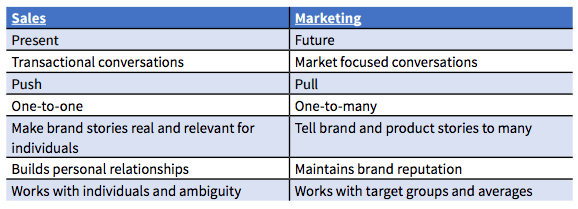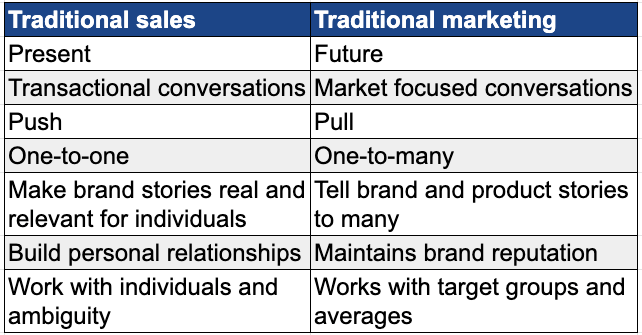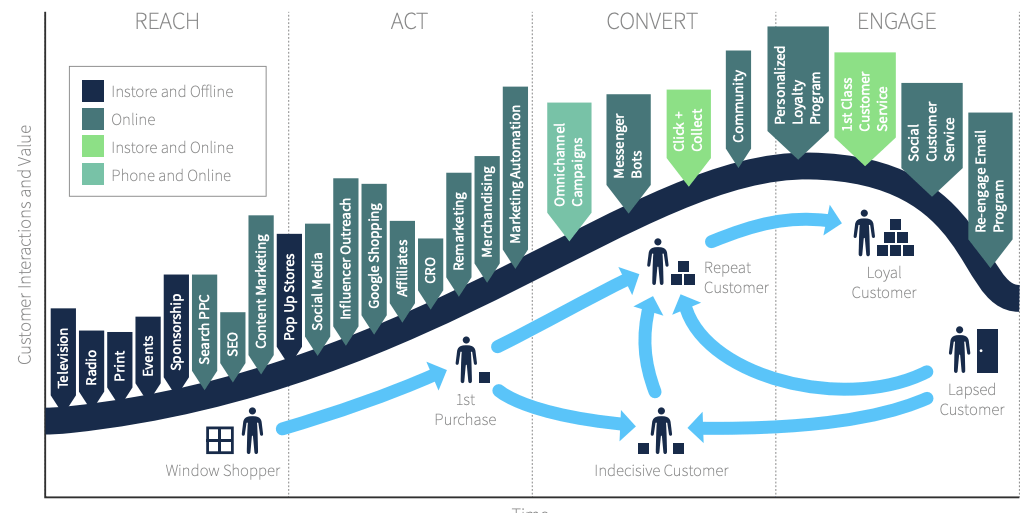Introducing 3 key methods for an integrated sales and marketing strategy
Marketing and sales teams have a reputation for not getting along. Working towards the same ultimate goal in different ways means there is often friction. That’s why we recommend an integrated sales and marketing strategy.
We’ve all heard that when the sales are coming in it’s because the sales team is doing a great job and when the sales slow then the marketing team needs to pull its socks up. How do we fix this? The key levers are regular and open communication, an understanding that each team needs the other in order to succeed, and well-implemented systems that help, rather than hinder performance for both teams.
Traditionally, sales and marketing have different priorities, you can see some examples below. Of course, in an integrated approach, both teams are aware of and support each other’s functions too.
When you think about it, there is nothing surprising about the fact marketing and sales teams often feel like they’re working at cross-purposes. They tend to work to a totally different set of metrics. That’s why we recommend setting and tracking goals that truly contribute to success, as opposed to ‘vanity metrics’. Below, you can view the customer lifecycle across the RACE Framework structure of reach, act, convert, and engage.
Why you need an integrated sales and marketing strategy
If the two teams aren’t fully in-sync knowing what’s going on both sides of the fence, you’re in for a huge mess of miscommunication, bogus metrics, and misplaced blames. To begin to sync up to one another’s cycles it’s important to measure a few metrics side by side. Without it then the two teams will always be working at cross purposes and failing to drive the business forward.
How to start integrating sales and marketing
The RACE Framework is a great place to start when considering your omnichannel sales and marketing activities. Our 5-steps RACE funnel considers each element of your customers’ journeys from awareness to repeat purchases. Here, both sales and marketing have different functions within the funnel, but it’s true than neither will achieve their goals without the other.
1. Demonstrate accountability and expect the same in return
Demonstrate mutual accountability by agreeing project plans and responsibilities together at the outset. Circulate any action plans in a way that’s easy for people to see their tasks such as pulling out tasks into an email or highlighting who has an action to complete. Better still, talk through the plan at a joint sales and marketing meeting and gain everyone’s commitment.
2. Put a sales and marketing service level agreement in place
A service level agreement can be a great way for sales and marketing teams to understand and agree what to expect from each other. A warning though… sales people generally dislike admin so try to keep this light if you want to hold their attention.
3. Use your marketing budget to incentivise the sales team
Motivating the sales team isn’t just a job for the sales manager, it’s a job for marketing too so once you’ve agreed commissions for the campaign, expand the plan even further. However, exact budget allocation will vary, it may be that some of these work best from the sales budget.




